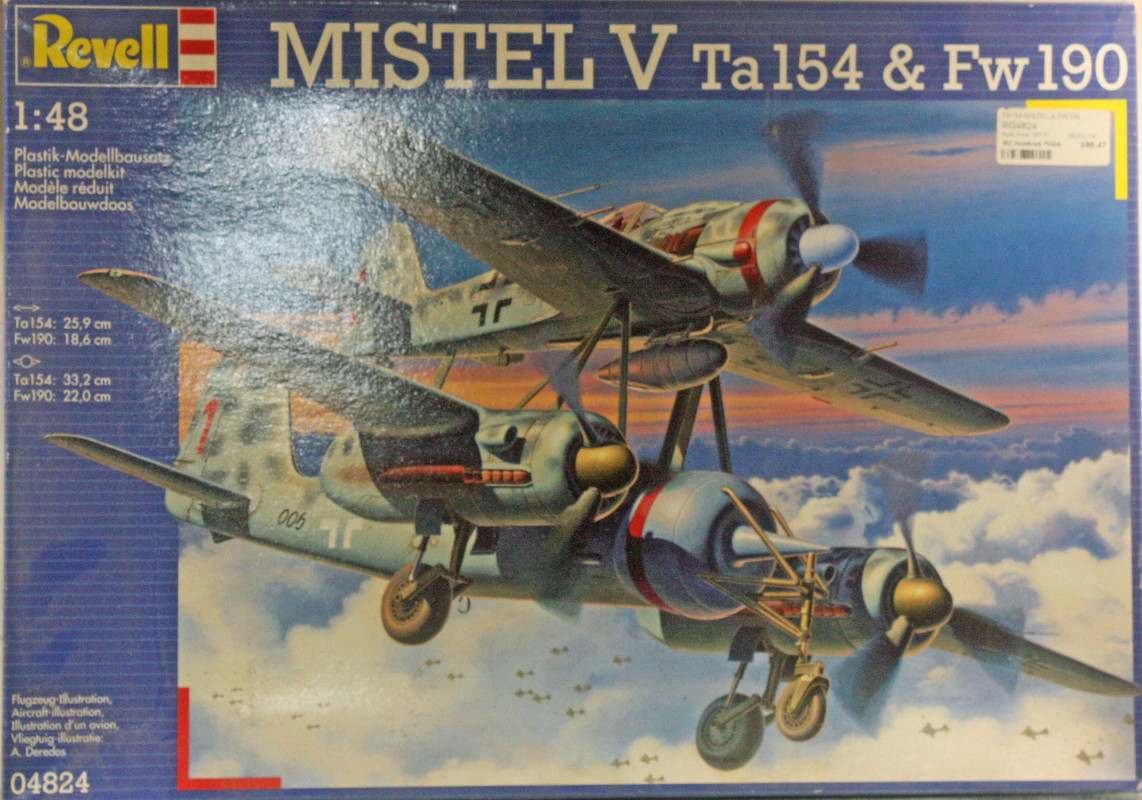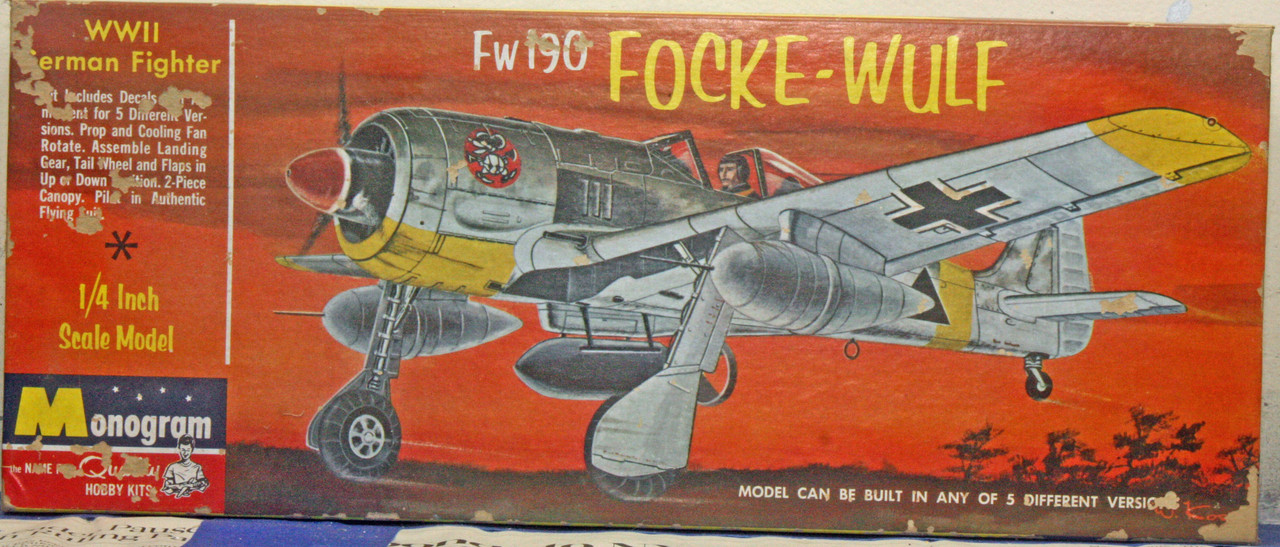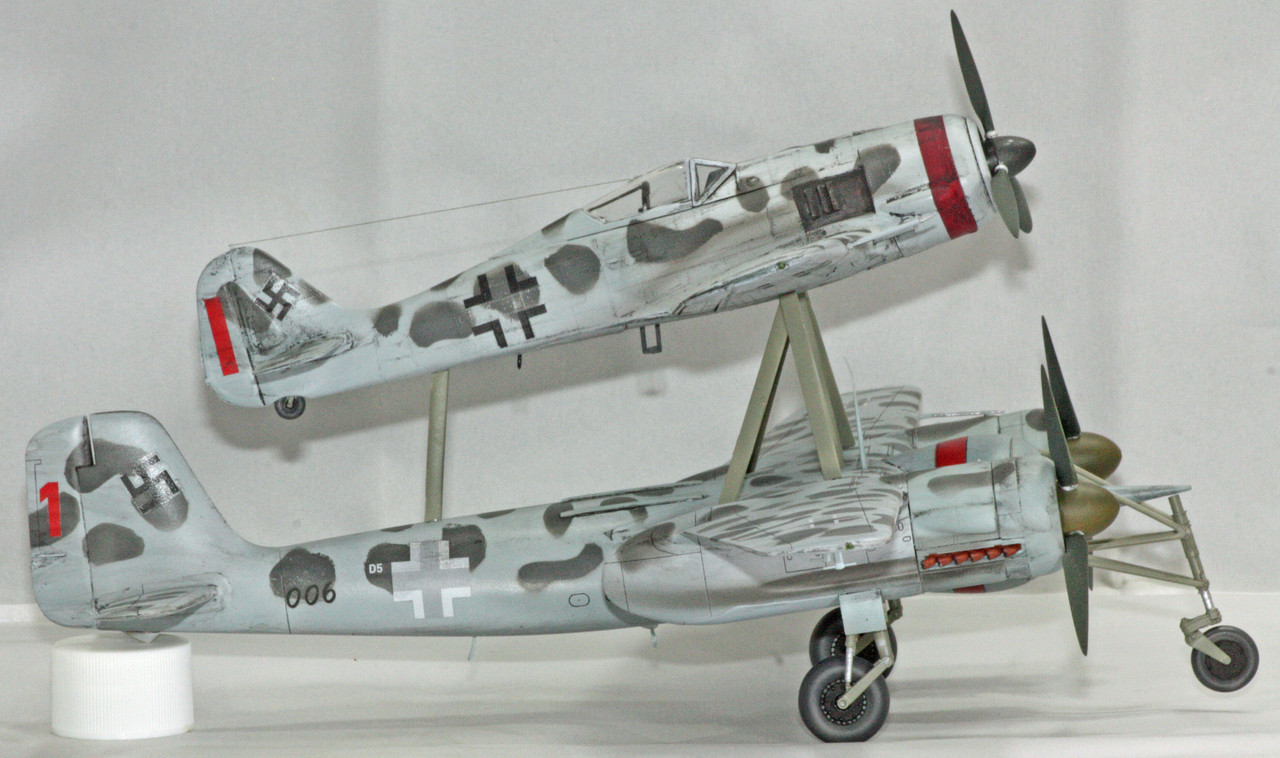The Germans are well known for their often out-of-the-box thinking toward weapons of war. The V-2 (https://en.wikipedia.org/wiki/V-2_rocket) was, I believe, the world's first ballistic missile. The V-1 (https://en.wikipedia.org/wiki/V-1_flying_bomb) looks like something out of a Flash Gordon serial. They developed air-to-ship missiles such as the Hs293 (https://en.wikipedia.org/wiki/Henschel_Hs_293), air-to-air missiles such as the X-4 (https://en.wikipedia.org/wiki/Ruhrstahl_X-4), and air-to-air missiles such as the Enzian (https://en.wikipedia.org/wiki/Enzian) which was never operational.
Another such example was the Mistel (German for mistletoe), which joined two aircraft in a Huckepack (piggy back) combination via connecting struts. The upper aircraft was typically a fighter, while the lower was most often a larger aircraft such as a bomber or fighter-bomber. The idea was to pack explosives into the cockpit of the lower aircraft. The upper aircraft would pilot the Mistel toward Allied bomber formations and aim the lower component toward those formations; once jettisoned, the pilot would detonate the bomb via radio signal. The intent was to cause an explosion that would bring down any Allied bomber within the diameter of the explosion's shock wave.

Online reviews claim the fighter component to be a Fw190A-8 variant, but I found information that perhaps refutes that assertion. In a book, The Warplanes of the Third Reich by William Green (first published in 1970), the author discusses the Ta154 on pages 241-245. On page 245 he turns his attention to the Mistel program, referencing combining a Ta154A-0 with an Fw190A-4. The kit itself is not specific as to which variants are modeled, but in looking at the same book at the section on the Fw190, I did find that details on the wings matched the A-4/R6. I don't know enough about the Focke Wulf fighter to be certain as to exactly which variant the kit represents, but this seemed close enough for me.
On to the kit. It began life as a Dragon kit. I had some previous exposure to Dragon kits through repops by Monogram Pro-Modeler. In fact, I had long considered adding a Monogram Pro-Modeler Ta 154 Moskito to my stash. On the sprues, all the parts look to be in good shape, with no flash or any other obvious issues.
Then comes construction. I started by cutting the cockpit section off the Ta154 fuselage parts, and then turned my attention to the Fw190. Not sure why I started that way, as I was soon to learn that the Fw190 kit is absolute dog doo. At least my copy was. Construction was relatively simple and straight-forward, but the cowling is a 4-part conglomeration that I never could get to align very well. The lower wing is intended to slide under the underside of the cowling - but this proved to be quite a bit more difficult to get into place than it would seem. When I got to attaching the upper wing surfaces, there was, I kid you not, a quarter-inch gap at the wing roots. I attempted to reduce that by implementing the dihedral, but that resulted in an overly-pronounced dihedral and reduced the gap only somewhat. I dialed back the dihedral to more a more realistic level and attempted to fill that Grand Canyon gap with Milliput - but that effort was more frustration as it looked like someone had tried to fill a gap with Milliput. My frustration with the kit came to a head when the freaking cowling crumbled right off the build despite being affixed with CA. With my patience gone, I opted to deep-six this piece of junk.
Oddly, I never encountered a single issue in building the Ta154. Everything fit just fine and there were no unusual construction steps or parts build-up. But after I trashed the Fw190, I was sitting there with a Ta154 missing its cockpit. I considered just re-attaching the cut fuselage cockpit section and building it as a standard Ta154A-0 Moskito - the kit comes with all the parts needed to build it as such. Then I remembered my stash, which includes a few other Fw190 kits - a Tamiya and two Monograms. I didn't want to use the Tamiya for this build, but one of the Monogram kits would be just fine. So in steps the original 1965 release:




Normally I will scratch build details in these old Monogram kits, but for this build, I built her straight out of the box. No reason to spend time on detailing a kit that would be attached atop some struts on a bomber aircraft that would then be hung from a ceiling due to space limitations. I was surprised that the original kit decal sheet, from which I used the instrument panel, actually worked.
The Fw190 went together with nary a problem, but as when I was a kid, it sure was hard to leave all the extra guns and bombs that Monogram included in that kit off.
Paint was mostly Vallejo, with some Model Master, Mission Models and Tamiya in there as well. The primary exterior colors are RLM 75 (splotches) and RLM 76. The bomb section of the Ta154 is RLM 65. I sprayed a mixture I made up of black, gray, and brown for the exhaust stains, and there is a coat of Flory wash on both airplanes.
I loaded both cowlings on the Ta154 with BBs, but that was not enough to keep this from being a tail-sitter. I could have added more weight into the fuselage right behind the needle-nose warhead, but given that this is now hanging from the ceiling, I'm fine with all that.





Anyone considering building this kit, I'd recommend acquring a separate Fw190.